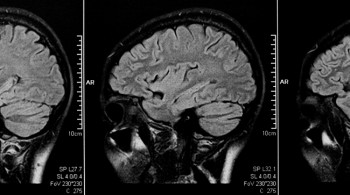When one thinks of a traumatic brain injury, it is natural to imagine a graphic, terrifying scene. In fact, a dramatic, life-changing head injury can occur with little visual evidence at all – a reality that can make it difficult to succeed in a court action. An experienced personal injury lawyer, though, will be able to garner the necessary evidence from neurologists, other experts and lay witnesses to help prove the diagnosis of a closed head injury and its impact on the victim.
Traumatic brain injuries are anything but uniform, which means every case is unique. A closed-head injury, for example, results when the brain comes into contact with the skull, but there is no penetrating object that comes into contact with the brain; the injury is entirely internal and may be without external bleeding. However, even within this subcategory, the severity and effects of an injury can vary widely.
Such injuries commonly occur in concussions or cases of whiplash, as in a car accident or sporting injury. Often times a person will experience something called Diffuse Axonal Injury (DAI), which could lead to a coma or death in extreme cases, or a long-term neurological disability in others. In the absence of objective diagnostic imaging like MRI, proving DAI can be one of the most difficult kinds of personal injury claim to prove.
Because the person may appear unaffected after the accident, the insurance company or the defence in a trial will question that person’s claims. MRIs, PET and CT scans are useful tools in documenting axonal damage, but because the damage is diffuse and the images generally less definitive than in other types of brain injuries, victims will need the help of an experienced, reputable neurologist and neuro-radiologist, in order to obtain useful images and to express the full extent of the damage.
DAIs can create very real emotional changes and cognitive impairments for sufferers. These, too, require a thoughtful approach for them to be successfully proven. Some effects include memory loss, problems focussing on visual objects and with concentrating. Emotionally, injury sufferers can easily become irritated with their loss of control over things like memory, speech and even mood.
To document these and the myriad of other problems that can arise immediately and over time, a lawyer will need to make use of testimony from friends and family who can attest to the person’s changes and from neurologists and psychotherapists who understand the brain’s complex workings. At Horowitz Injury Law, we have almost 35 years of experience in proving traumatic brain injury claims. Call us for a free consultation.




